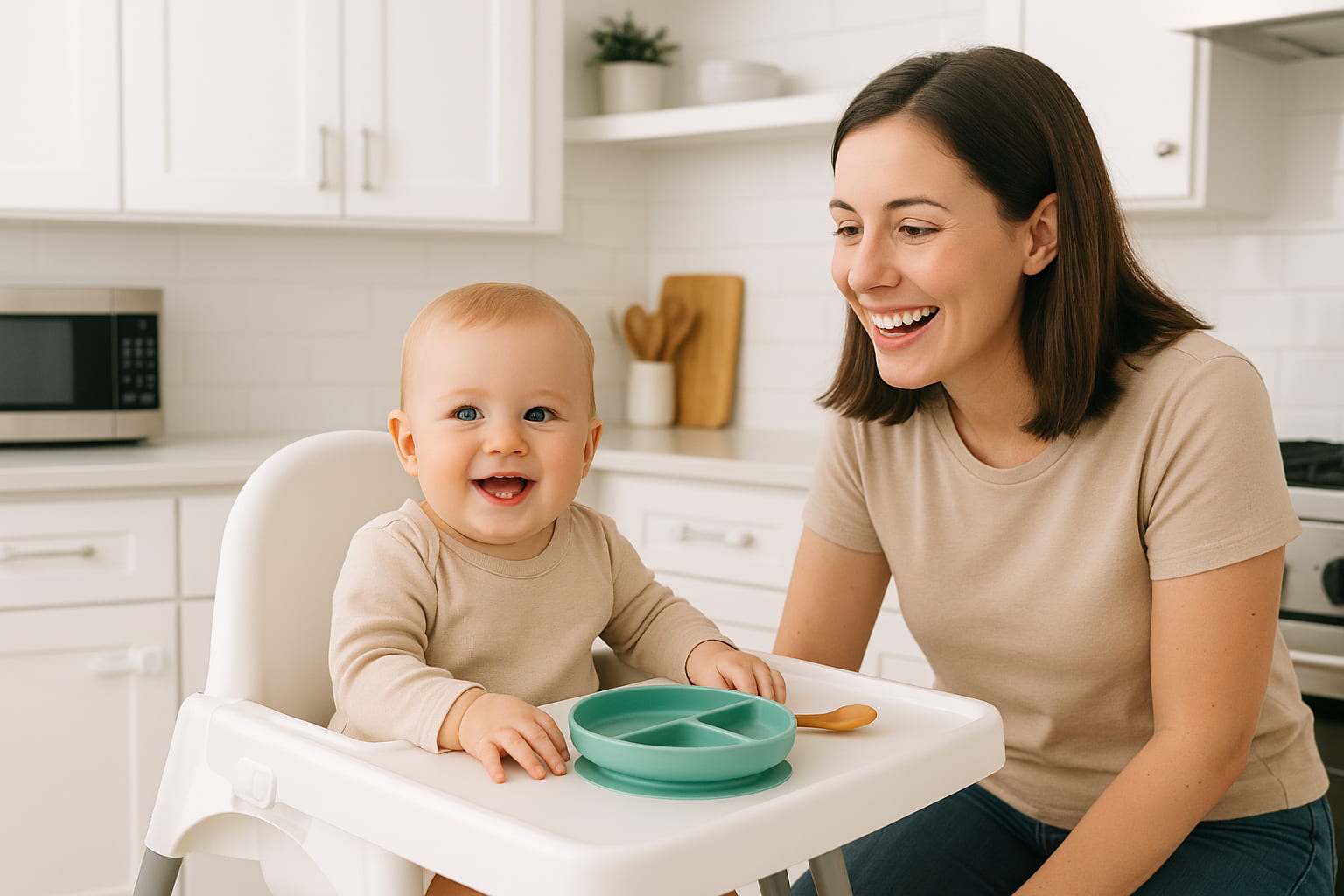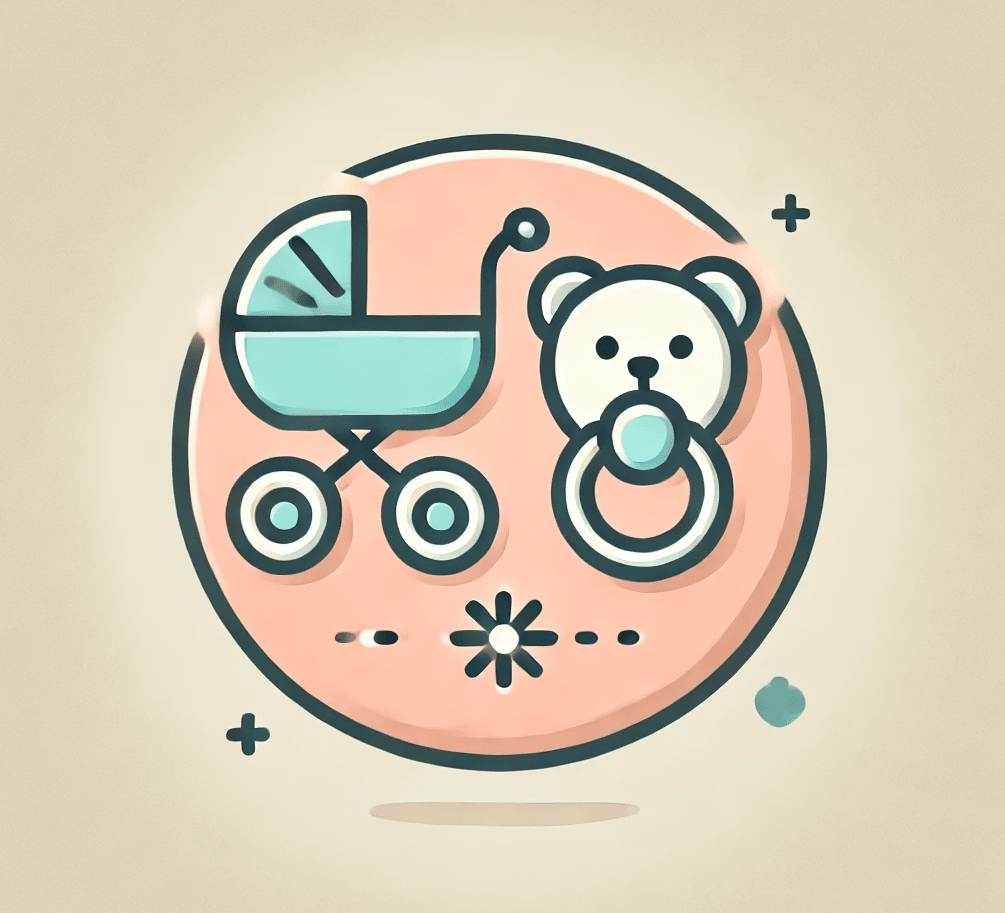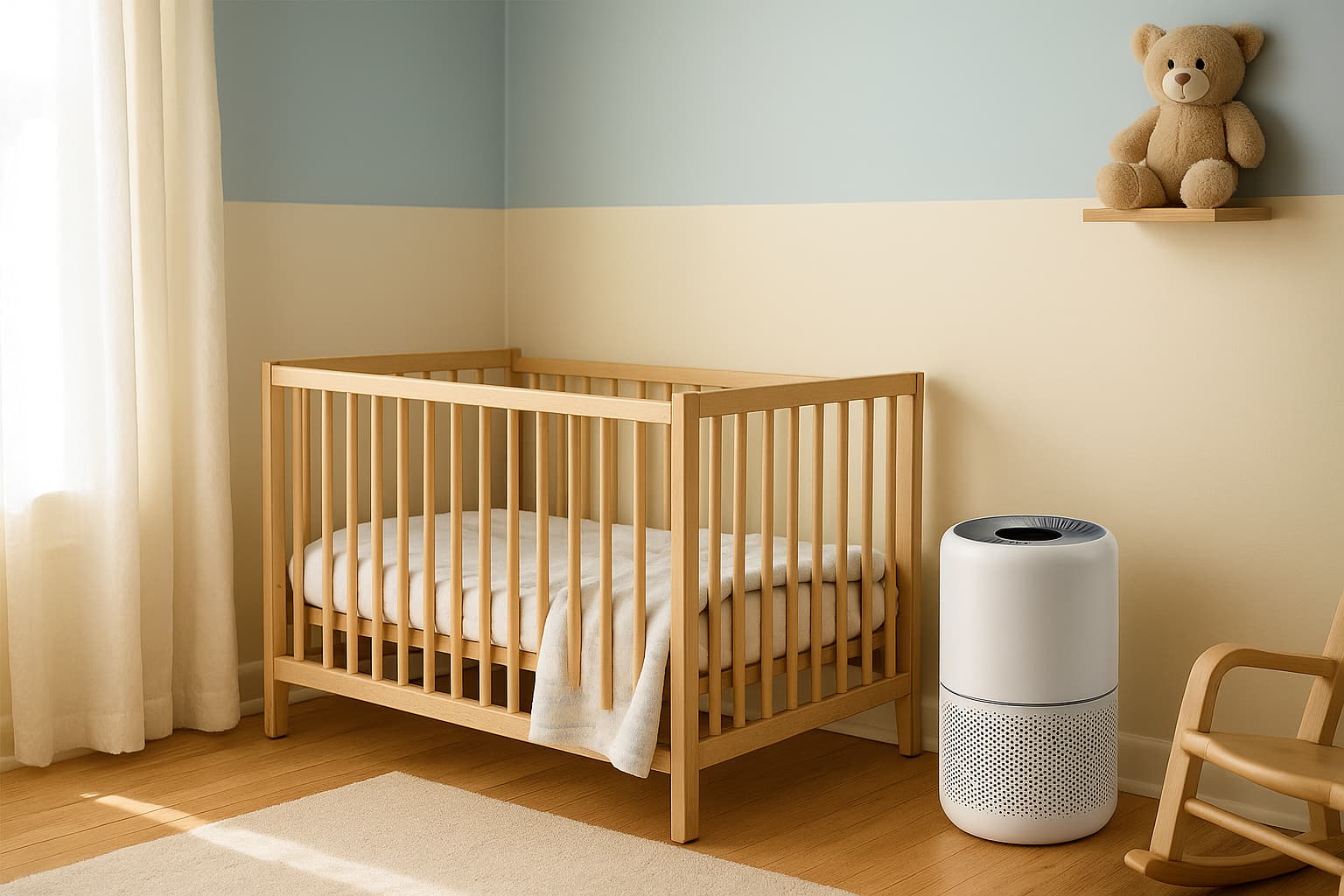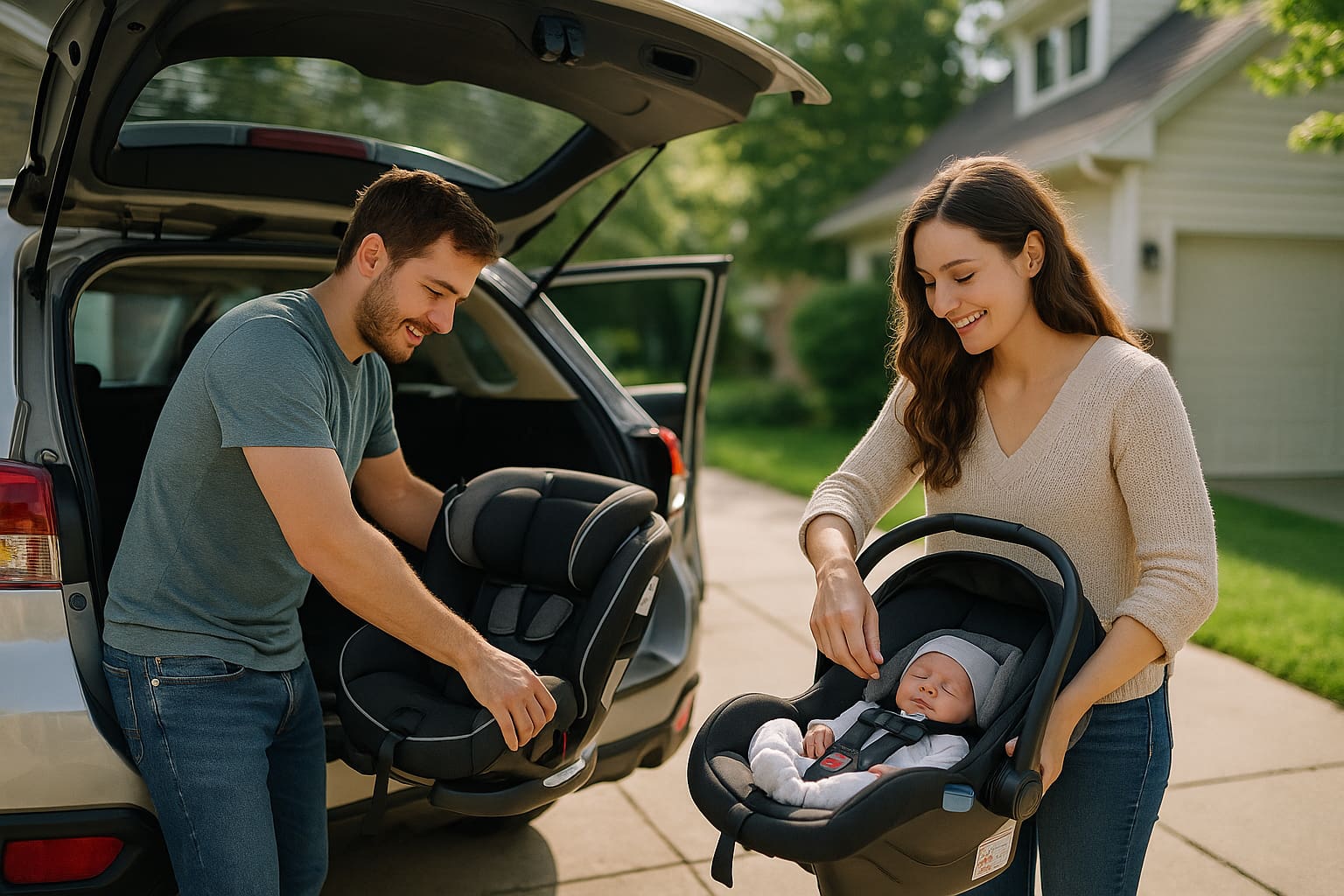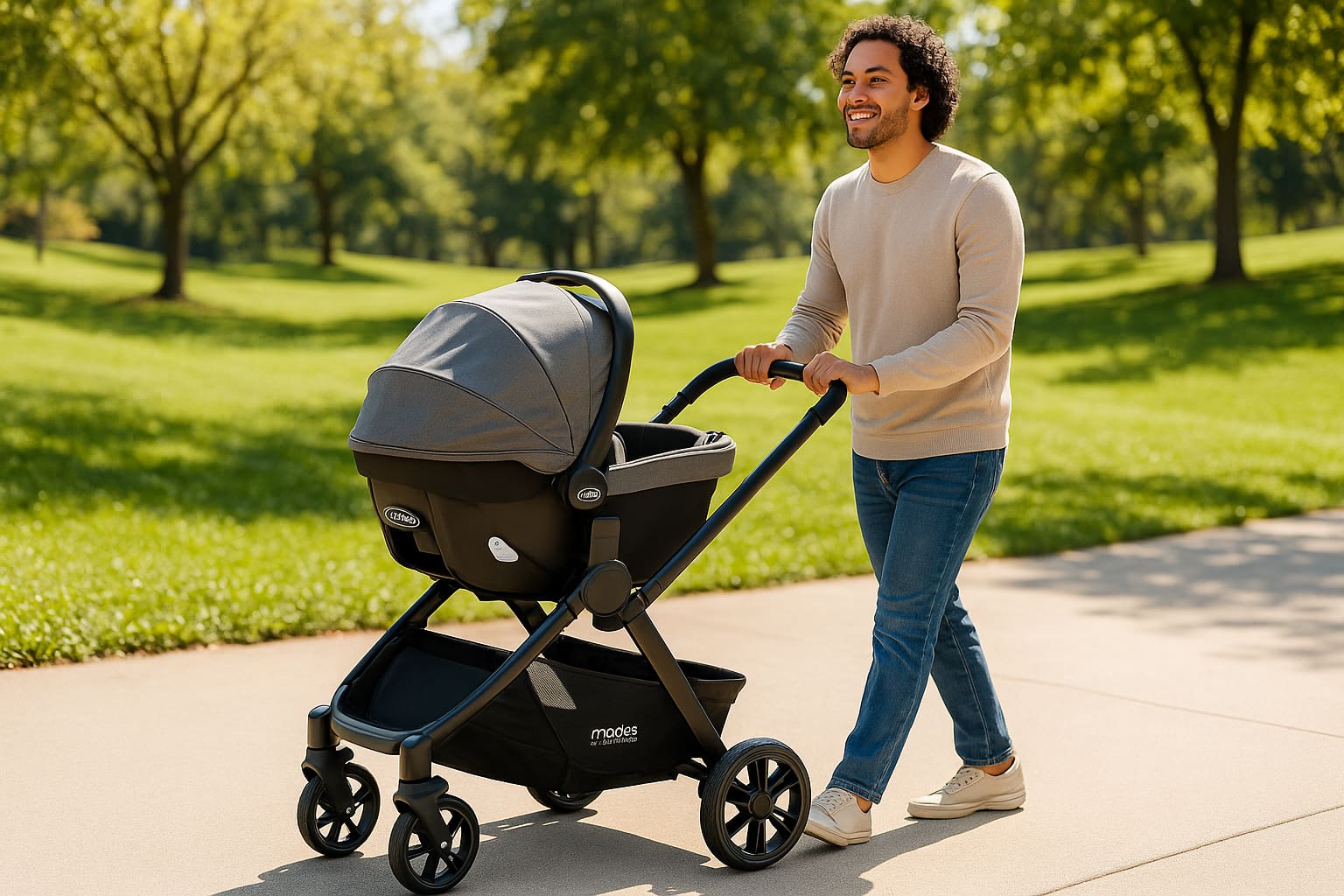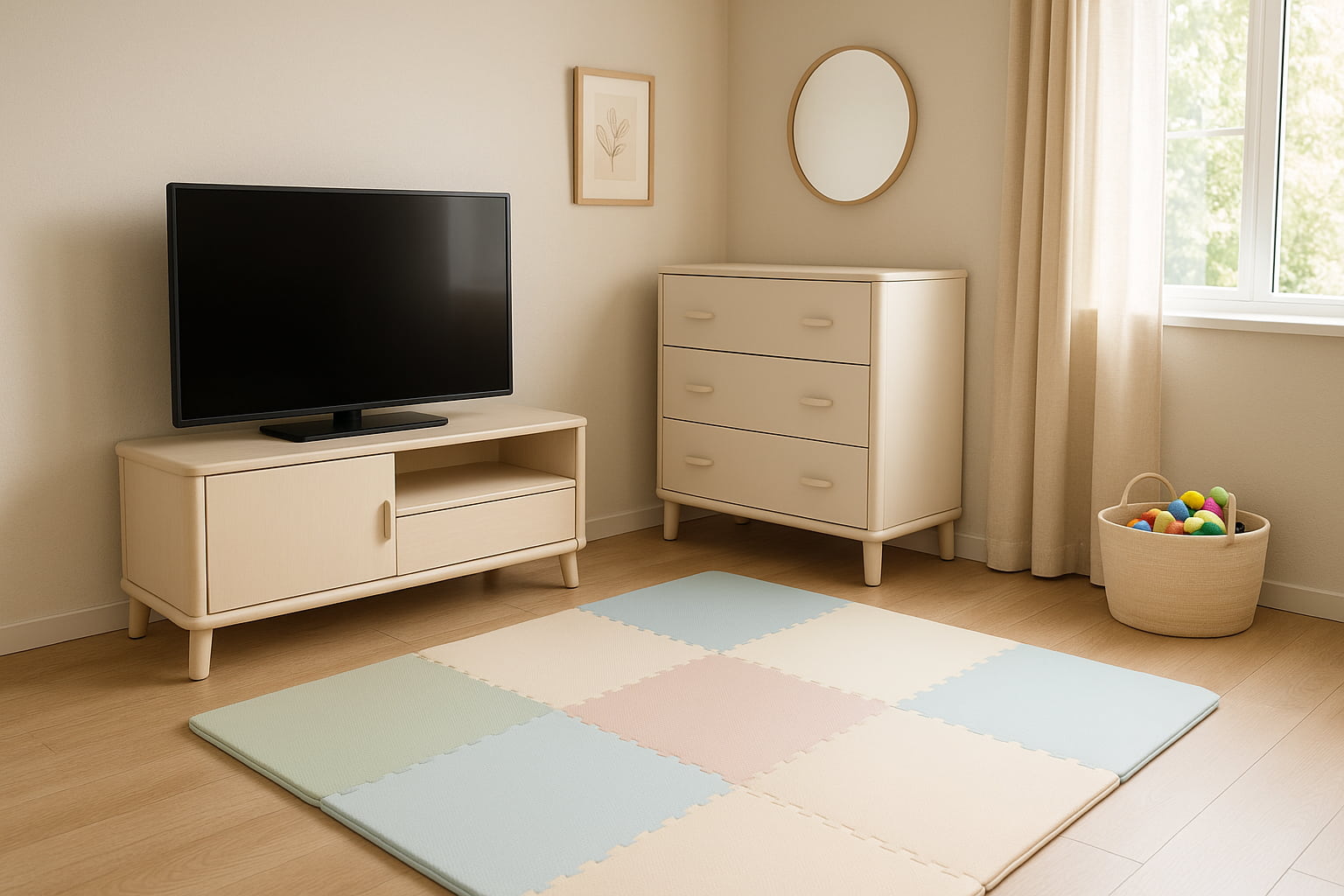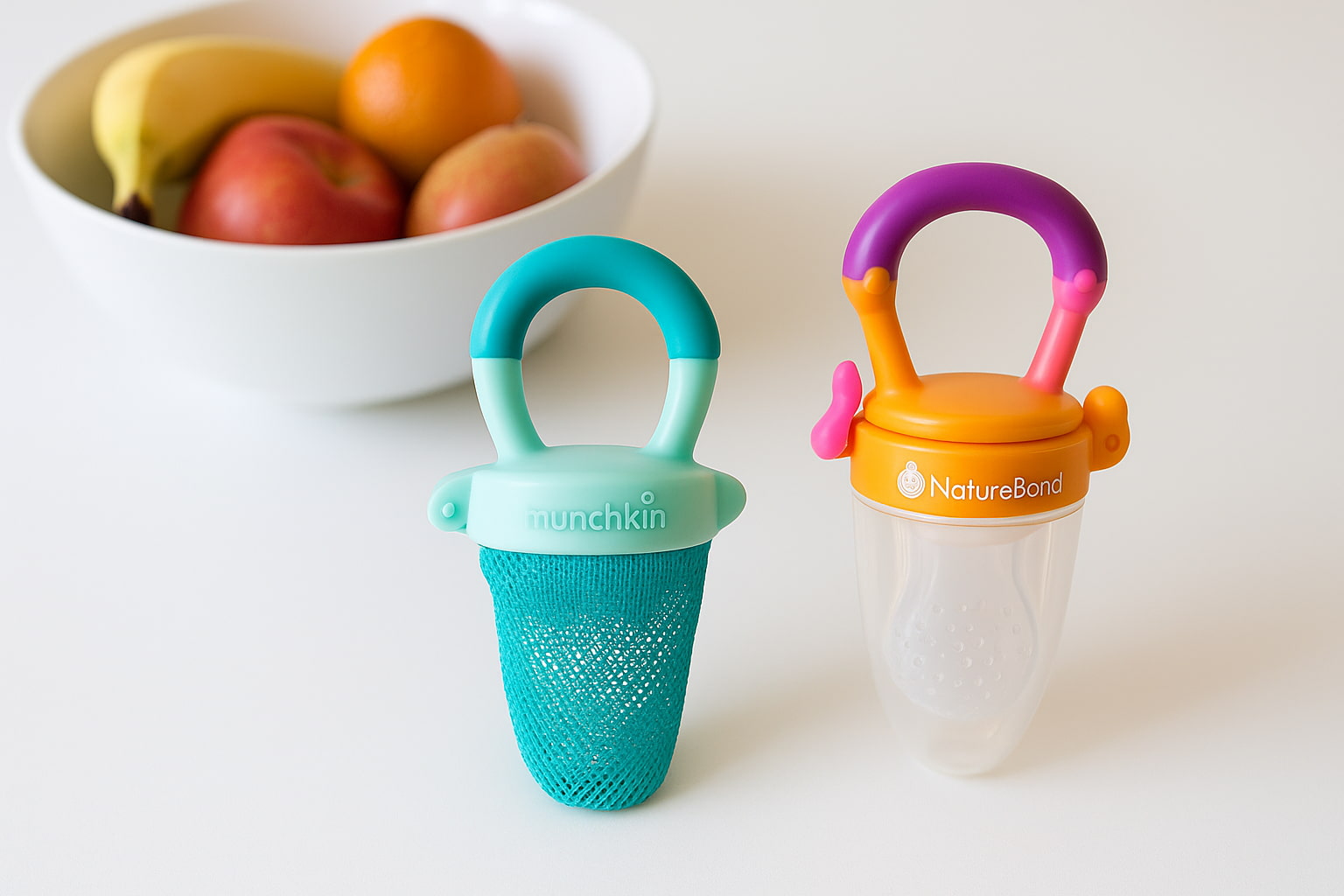Your kitchen may appear to be the safest and cleanest space in your home at first. But once your baby starts crawling and reaching, it becomes a whole different story.
I didn’t realize how many dangers were right in front of me. That changed the moment my baby started opening drawers, reaching for counters, and peeking into cabinets like a tiny explorer
Here’s why it’s time to baby-proof your kitchen, especially for choking hazards:
🧊 Food that drops from counters can become a choking trap in seconds
🔩 Tiny tools, magnets, twist ties, and clips are often within a baby’s reach
🍎 Feeding time can go wrong if the baby’s posture or spoon choice isn’t safe
Let’s go step by step and make your kitchen baby-ready.
🔎 Common Kitchen Items That Can Cause Choking
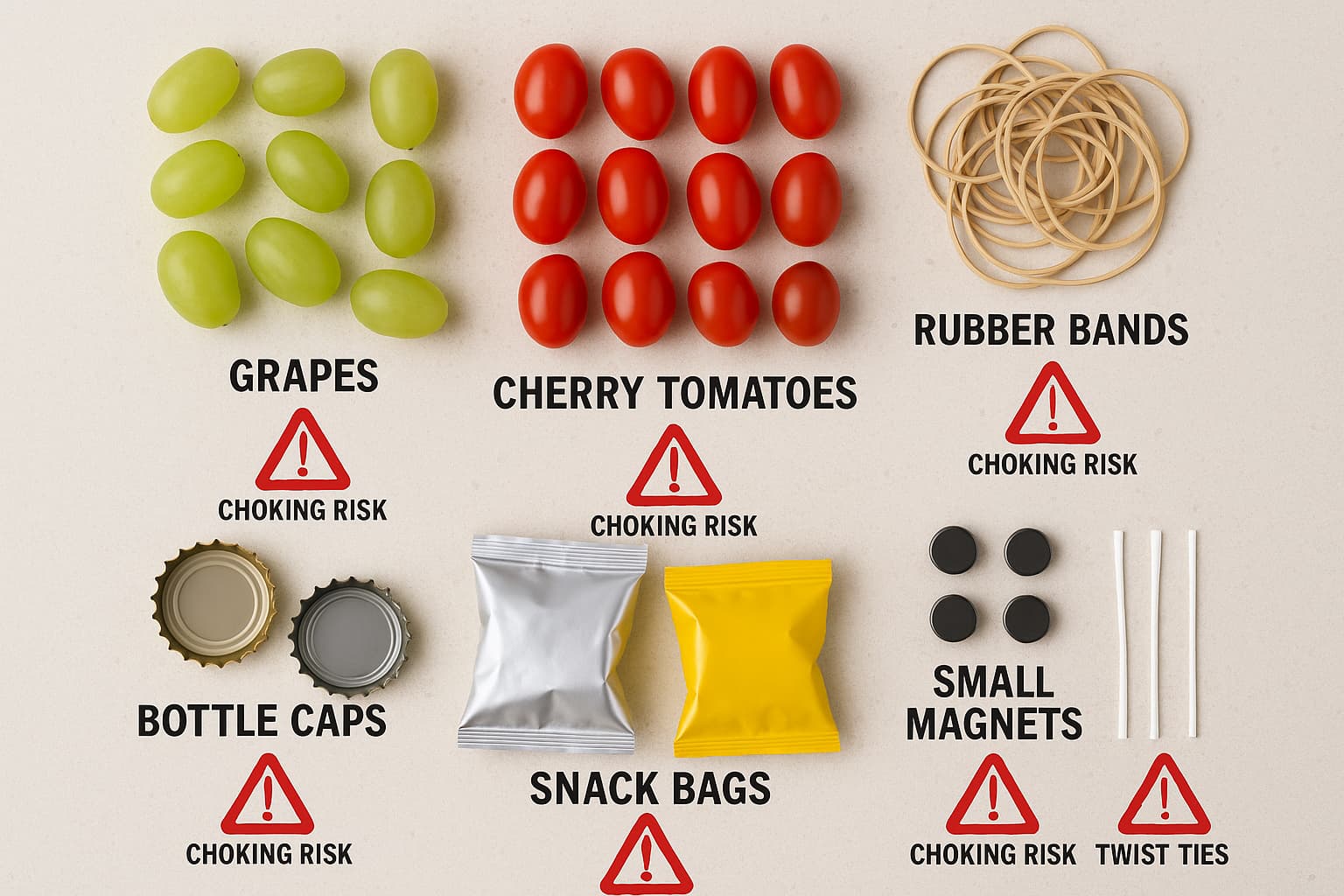
There are probably more choking hazards in your kitchen than in your playroom.
Look out for:
✔️ Grapes, cherry tomatoes, or popcorn left on the floor
✔️ Bottle caps, magnets, loose rubber bands on counters
✔️ Dropped pills or vitamins around sink areas
✔️ Drawers with spare screws, twist ties, or snack bags
👀 Want a full room-by-room hazard checklist? 👉 Don’t miss our guide to Common Household Items That Can Choke a Baby.
🧺 How to Store Food Safely to Prevent Choking
Babies don’t need access to the fridge to find danger; they just need one dropped item or an open pantry drawer.
Storage tips:
✔️ Foods that can choke, such as string cheese, almonds, and grapes, should be kept up high.
✔️ Use childproof containers for snacks and dried fruits
✔️ Avoid leaving open chip bags at toddler eye level
✔️ Install fridge locks if your baby can open doors or drawers
🚪 Best Tips for Baby-Proofing Cabinets and Drawers
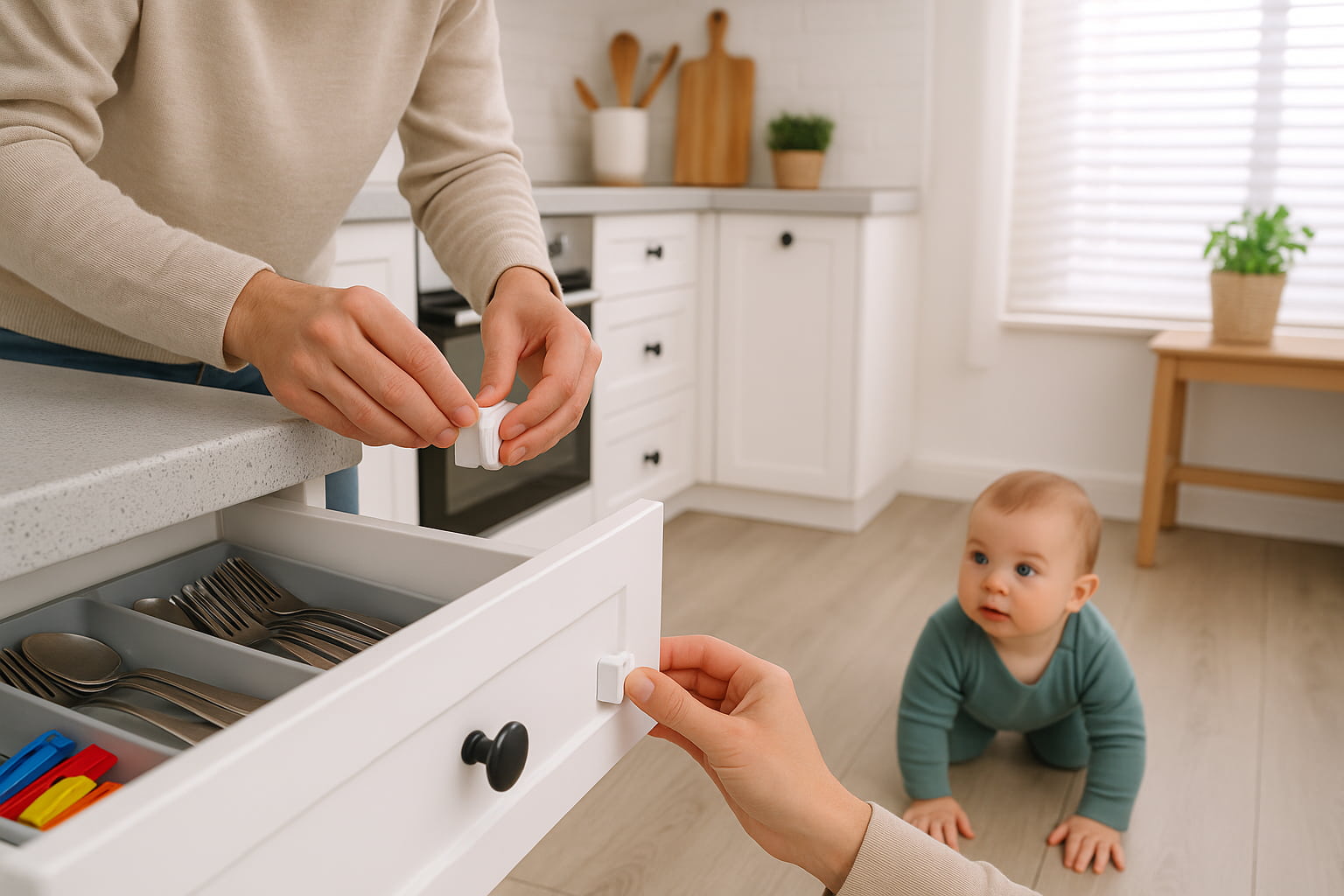
This is where choking hazards really hide. Even “safe” drawers can contain items your baby could put in their mouth.
Must-dos:
✔️ Install magnetic locks or latch systems
✔️ Relocate small kitchen gadgets and sharp tools
✔️ Keep cleaning supplies in high or locked storage
✔️ Do not store rubber bands, clips, or pieces of dish sponge in drawers.
🛒 Looking for feeding tools that do double duty? 👉 Check out our 5 Best Baby Feeding Sets to Prevent Choking.
🏠 Does Kitchen Layout Matter for Baby Safety?
Absolutely. Your kitchen’s zones can either help or harm your baby’s exploration.
Layout hacks:
🔸 Create “baby-safe zones” where nothing hazardous is stored
🔸 Avoid floor-level baskets with plastic or packaging
🔸 Block off access to under-sink areas
🔸 Add a soft floor mat beneath the high chair to catch dropped food
🪑 Babyproofing Your Countertops and High Chairs
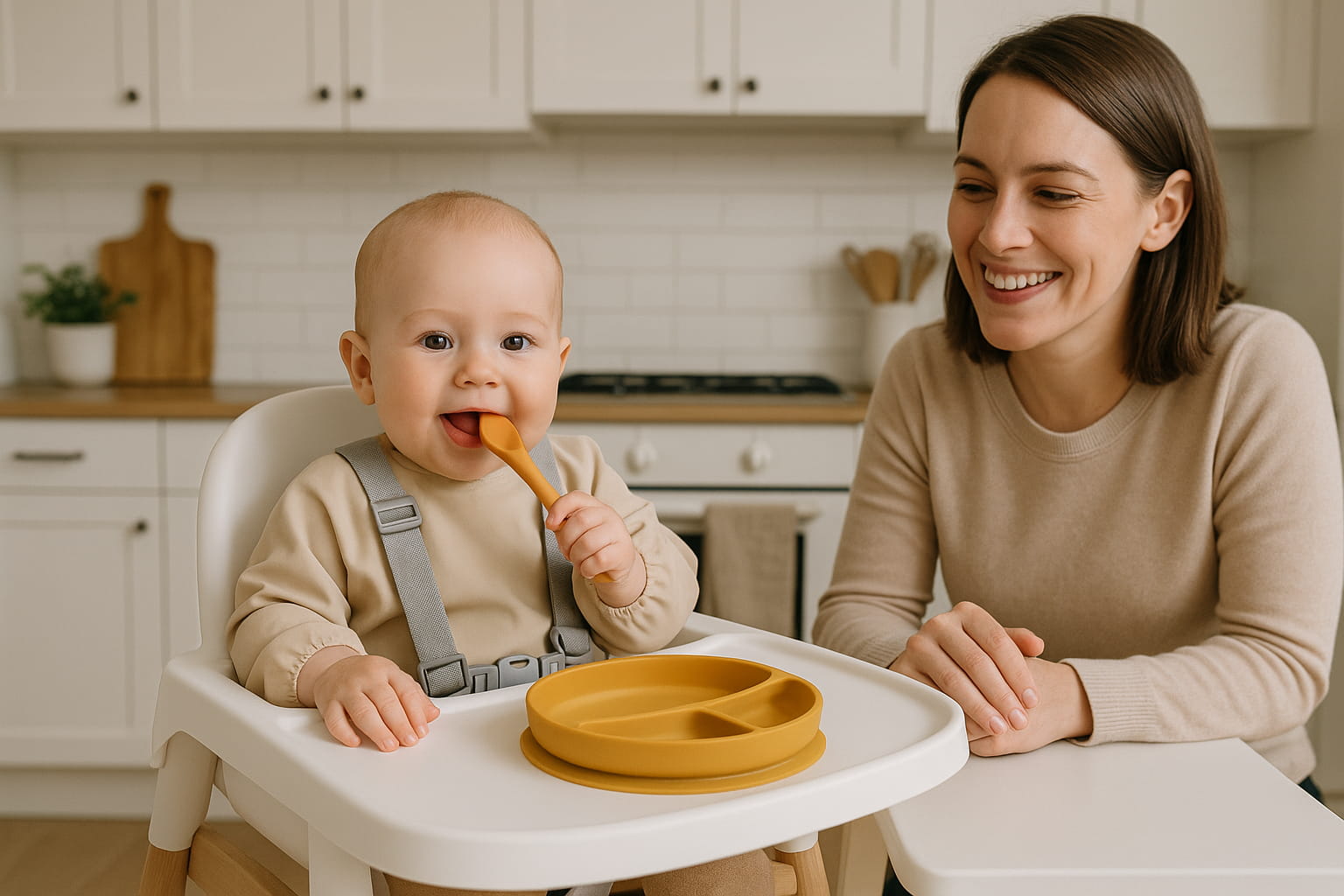
Even if your baby can’t reach the counter yet, things fall, and they notice everything.
Safety steps:
🔸 Remove coins, keys, and utensils from the edges.
🔸 Don’t keep cut food near the high chair zone
🔸 Use suction plates and utensils with choke guards
🧠 Did You Know?
Most choking incidents among infants occur during everyday activities like feeding or playtime. According to the American Academy of Pediatrics, two-thirds of fatal choking cases involve children under 1 year of age.
🚑 Choking First Aid Basics Every Parent Must Know
While prevention is key, knowing how to respond if something happens matters too.
Quick tips:
🔸 Learn infant CPR and choking protocols
🔸 Post emergency numbers near the kitchen
🔸 Verify that you can get to the infant and remove them from the high chair.
🔸 Don’t use your finger to sweep blindly, as it can push the item deeper
🚫 What NOT to Do When Babyproofing the Kitchen
Avoid these common mistakes:
❌ Leaving drawer safety until “later”
❌ Assuming that the baby is no longer able to reach the counter
❌ Letting older siblings leave their snacks out
❌ Underestimating infants’ crawling and grasping speed
✅ Final Checklist to Baby-Proof Your Kitchen for Choking Risks
Let’s review the baby-proof your kitchen checklist:
☑️ Install locks on all lower drawers
☑️ Store all choking-hazard foods up high
☑️ Vacuum or sweep the floor after every meal
☑️ Use suction plates and anti-choke utensils
☑️ Keep counters clear of small objects
☑️ Know what to do in a choking emergency
🧠 Want safer spoons that make feeding time easier, too? 👉 Don’t miss our Best Baby Spoons Compared for Choking Prevention.
❓ FAQs About Baby-Proofing Kitchens
Q: When should I start baby-proofing the kitchen?
Start before your baby begins crawling. Prevention beats panic.
Q: What’s the most dangerous kitchen item?
Batteries, magnets, grapes, and loose food packaging are top risks.
Q: Can I use DIY drawer locks?
While possible, store-bought magnetic locks tend to be more reliable.
Q: What’s a fast daily safety habit?
Do a 1-minute floor sweep and wipe counters after every meal.
🏡 Let Your Kitchen Be a Safe and Happy Place
Your kitchen doesn’t have to feel like a danger zone.
With just a few small changes, like locking drawers, cleaning up dropped food, and using safe baby spoons, you can turn it into a place that feels calm and safe. There are no frightening risks for your baby to learn, explore, or enjoy food.
And here’s the best part: once you baby-proof your kitchen, you’ll feel more relaxed, too. No more rushing to grab something off the floor or worrying about what your baby might find.
It’s not about being perfect. It’s about being ready.
And every little change you make is a big win for your baby’s safety.
⚠️ Disclaimer
This content is for informational purposes only and should not replace professional child safety advice. Always supervise your baby closely and consult your pediatrician for safety-related concerns.
✍️ Written by Find For Baby
We help parents create safer homes, one drawer lock and suction spoon at a time.
